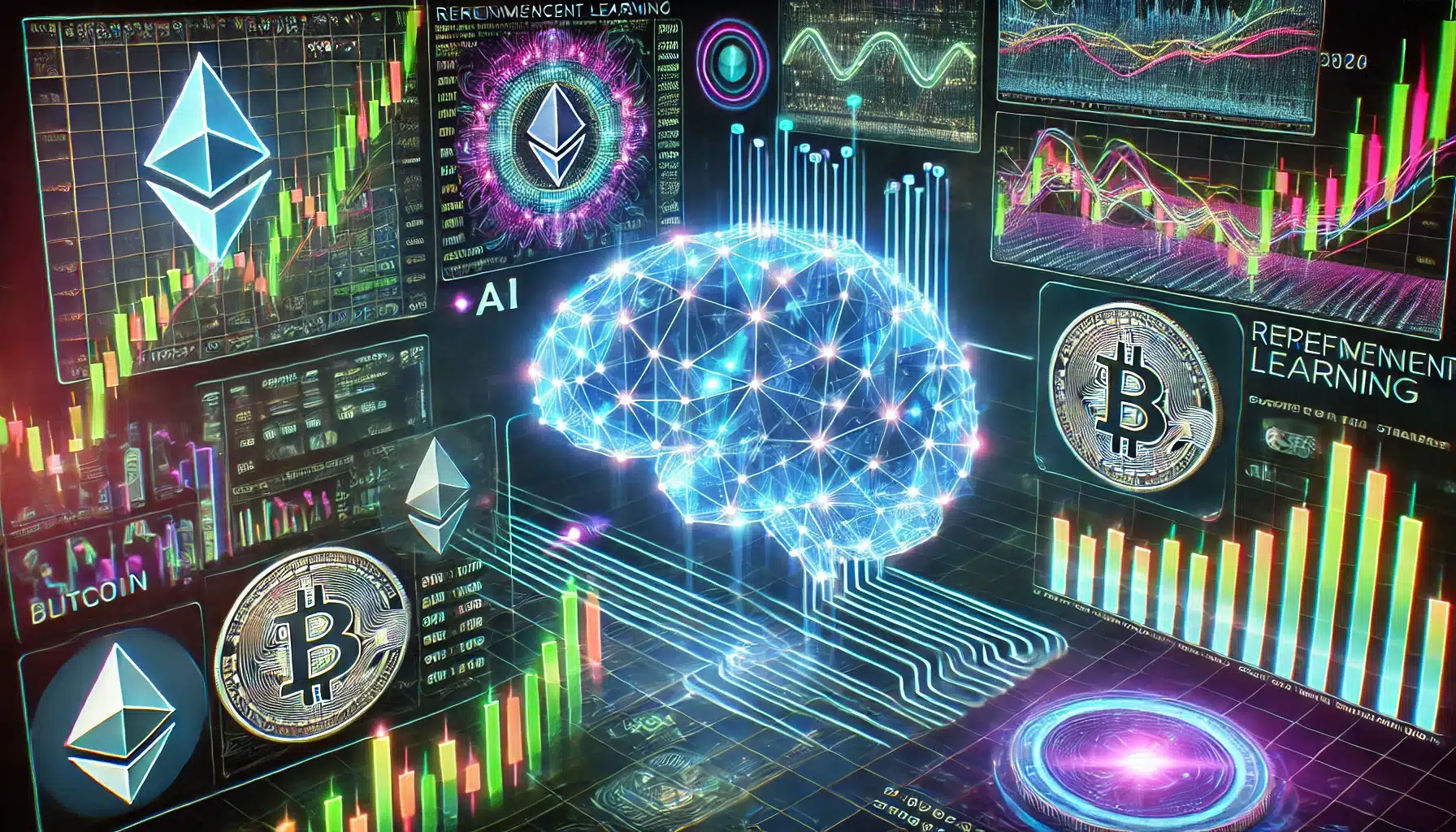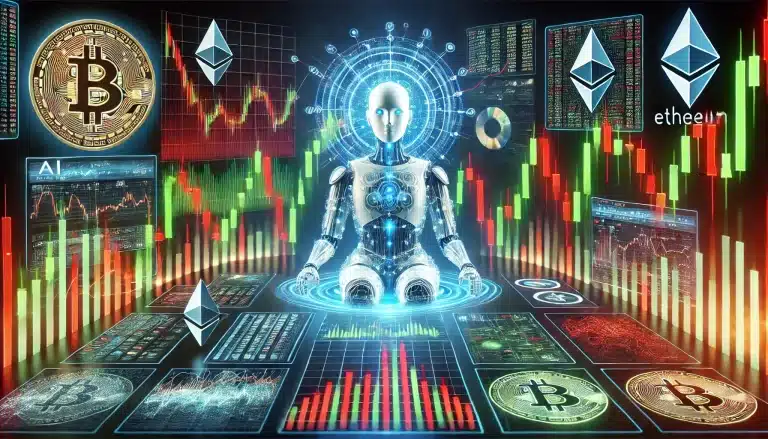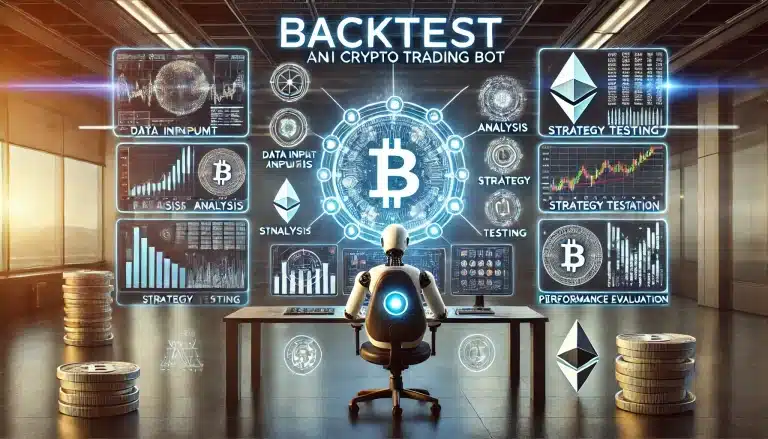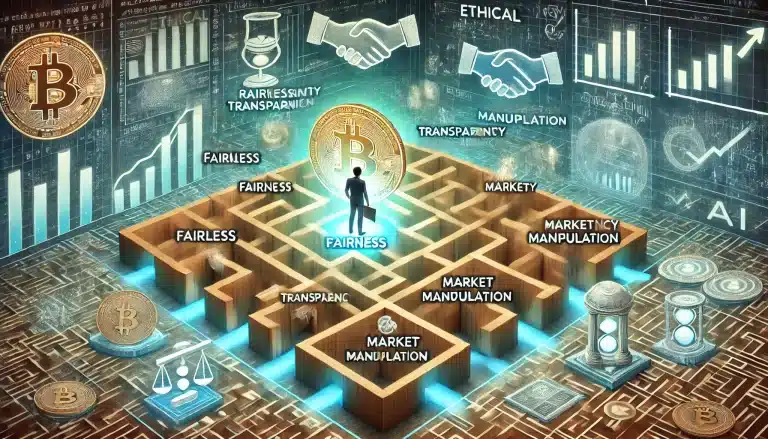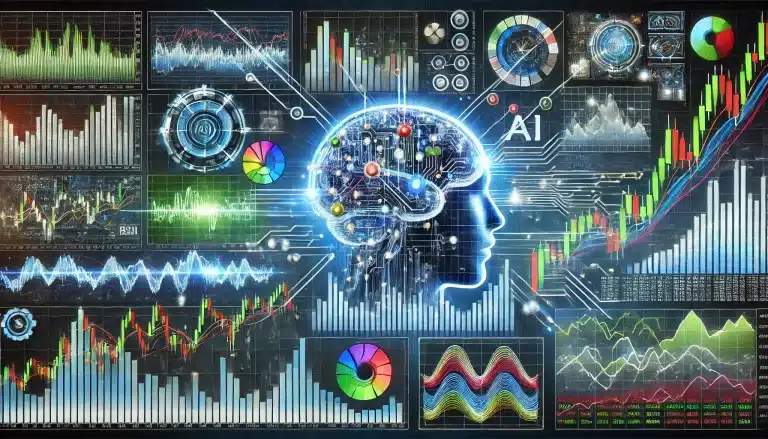Envision a trading bot that gains wisdom from its errors and consistently enhances its capabilities in the ever-changing crypto market.
Welcome to the world of reinforcement learning in cryptocurrency trading!
In this article, we’re gonna pull back the curtain on this cutting-edge tech. We’ll explore how reinforcement learning is flipping the script on cryptocurrency trading strategies, and trust me, it’s more exciting than a bull run in a bear market.
What is Reinforcement Learning in the Context of Crypto Trading?
Boy, oh boy, let me tell you about my journey into the wild world of reinforcement learning in crypto trading. It’s been a rollercoaster, to say the least! I remember when I first stumbled upon this concept – I was knee-deep in crypto losses and desperately searching for a way to turn things around. Little did I know, I was about to dive headfirst into a whole new universe of trading.
So, what the heck is reinforcement learning in crypto trading? Well, imagine you’re teaching a puppy to fetch. You don’t just explain the rules – you let the pup try, fail, and learn from its mistakes. That’s basically what reinforcement learning does, but with trading bots instead of puppies.
In the simplest terms, reinforcement learning is a type of machine learning where an agent (our trading bot) learns to make decisions by interacting with its environment (the crypto market). It’s like having a super-smart intern who never sleeps and is constantly trying to figure out how to make you more money.
The key components of this whole shebang are the agent, environment, actions, and rewards. Our agent is the bot, the environment is the crazy crypto market, the actions are buy, sell, or hold, and the rewards? Well, that’s the sweet, sweet profit (or bitter losses) that come from those actions.
Now, here’s where it gets interesting. Unlike traditional algorithmic trading, which follows a set of predefined rules, reinforcement learning adapts on the fly. It’s like the difference between following a recipe and actually learning to cook. Sure, the recipe might work most of the time, but what happens when you’re out of an ingredient or cooking for someone with allergies? That’s where the ability to adapt comes in clutch.
I’ll never forget the first time I saw my RL bot in action. I had spent weeks coding this thing, feeding it historical data, and crossing my fingers. When I finally set it loose on a small portion of my portfolio, I was a nervous wreck. But lo and behold, it started making decisions I never would have thought of! It was catching patterns in the market that my human brain just couldn’t process fast enough.
Of course, it wasn’t all sunshine and lambos; there were plenty of challenges in finance. There were plenty of facepalm moments too. Like the time my bot went on a buying spree during a market dip, only for the dip to keep dipping. Ouch. But here’s the kicker – it learned from that mistake. Next time a similar situation rolled around, it was more cautious.
One thing I’ve learned is that RL in crypto trading isn’t a magic bullet. It’s more like a really smart tool that needs the right wielder. You’ve gotta understand the basics of both trading and machine learning to really make it work for you. But man, when it clicks, it’s like having a trading superpower.
The coolest part? This field is evolving faster than you can say “to the moon.” Every day, there are new algorithms, new applications, and new ways to use RL in the crypto space. It’s like being at the frontier of a new trading era.
The Benefits of Using Reinforcement Learning in Crypto Trading
Alright, let’s dive into the juicy stuff – why the heck should you even bother with reinforcement learning in crypto trading? Trust me, I asked myself this question a thousand times when I was pulling my hair out trying to debug my first RL model. But stick with me, because the benefits are pretty darn impressive.
First off, let’s talk about adaptive decision-making in volatile markets. Crypto is like that friend who can’t make up their mind about where to eat – it’s constantly changing. One minute Bitcoin’s soaring, the next it’s crashing faster than my hopes of ever owning a Lambo. Traditional trading strategies often struggle with this chaos, but RL? It thrives on it.
I remember this one time, my RL bot caught a sudden pump in a small-cap altcoin before I even had my morning coffee. By the time I checked my portfolio, it had already made a tidy profit and moved on to the next opportunity. That’s the kind of adaptive decision-making that can make a real difference in your trading game.
Now, let’s geek out for a second about high-dimensional data and complex patterns. Crypto markets are like a giant puzzle with a gazillion pieces. Price, volume, social media sentiment, news… it’s enough to make your head spin. But for an RL algorithm, it’s all just data to crunch. These bad boys can handle way more information than our puny human brains, spotting patterns we’d never see.
One of the coolest benefits, in my opinion, is the continuous learning and improvement without human intervention. It’s like having a trading assistant that never sleeps, never gets emotional, and is always trying to get better. I’ve literally woken up to find my bot using deep reinforcement learning has learned new strategies overnight. Talk about a productive night’s sleep!
But here’s the real kicker – the potential for higher returns and reduced emotional bias. We’ve all been there, panic selling during a dip or FOMO buying at the top. It’s human nature, and it’s a trader’s worst enemy. An RL bot doesn’t have emotions. It doesn’t care if Elon Musk tweeted about Dogecoin or if your cousin’s roommate’s dog walker heard a rumor about the next big ICO.
I’ll never forget the time I was sure a certain token was about to moon. I mean, I was ready to bet the farm on it. But my RL bot? It wasn’t having any of it. It saw something in the data that I didn’t, and it stayed away. Lo and behold, that token tanked harder than my high school band’s first gig. The bot saved me from a costly mistake, all because it wasn’t clouded by my emotional bias.
Of course, it’s not all rainbows and unicorns. Implementing RL in crypto trading comes with its own set of challenges. You need a solid understanding of both trading and machine learning. There’s a lot of trial and error involved, and you need to be prepared for some losses along the way as your model learns.
But here’s the thing – the potential benefits far outweigh the initial hurdles. Once you get it right, you’ve got a trading system that can adapt to market changes, handle complex data, learn continuously, and trade without emotional bias. It’s like giving yourself a trading superpower.
So, if you’re willing to put in the work and learn the ropes, reinforcement learning could be your secret weapon in the wild world of crypto trading. Just remember, no system is perfect, and past performance doesn’t guarantee future results. Always trade responsibly, and never invest more than you can afford to lose. But if you ask me? The potential of RL in crypto trading is pretty darn exciting.
Popular Reinforcement Learning Algorithms for Crypto Trading
Okay, folks, buckle up! We’re about to dive into the world of reinforcement learning algorithms for crypto trading. Now, I’m not gonna lie – when I first started exploring this stuff, it felt like trying to read hieroglyphics. But trust me, once you get the hang of it, it’s actually pretty cool.
Let’s kick things off with Deep Q-Networks (DQN). This bad boy is like the Swiss Army knife of RL algorithms. I remember the first time I implemented a DQN for my trading bot – it was like watching a kid learn to ride a bike. At first, it was all over the place, buying high and selling low (sound familiar?). But give it enough time and data, and suddenly it’s pulling off moves that would make Warren Buffett jealous.
DQNs are great for handling complex state spaces, which is a fancy way of saying they can deal with all the chaos that is the crypto market. One time, my DQN-powered bot spotted a pattern across multiple alt coins that I hadn’t even considered. It made a series of trades that seemed bonkers at first, but ended up netting a sweet profit. That’s the power of deep learning, baby!
Next up, we’ve got Policy Gradient methods like REINFORCE and Actor-Critic. These are like the cool kids of the RL world. They’re all about learning the best policy for making decisions, rather than trying to estimate the value of each action.
I’ll never forget when I first implemented an Actor-Critic model. It was like my bot suddenly developed a personality. The ‘Actor’ was making bold moves, while the ‘Critic’ was there to keep it in check. It reminded me of those old cartoons with the angel on one shoulder and the devil on the other, especially when considering the signals from the market. Except in this case, both were trying to make me money!
Now, let’s talk about the new kid on the block – Proximal Policy Optimization (PPO). This algorithm is all about stability, which, let’s face it, is something we could all use more of in the crypto world. PPO is like that steady friend who always makes sure you get home safe after a wild night out.
When I first started using PPO, it was during a particularly volatile period in the market. Everything was going crazy, but my PPO bot? Cool as a cucumber. It made consistent, stable gains while other trading strategies were losing their shirts. It was like watching a tightrope walker cross Niagara Falls while everyone else was falling in.
Of course, no algorithm is perfect for every situation. That’s why it’s crucial to compare their performance in different market conditions. I’ve spent more sleepless nights than I care to admit running backtests and comparing results. Sometimes, a simple DQN outperforms a fancy PPO setup. Other times, an Actor-Critic model steals the show.
One particularly memorable experiment was during the 2021 bull run. I had different bots running different algorithms, all trading with play money. The results were eye-opening. The DQN was great at catching sudden pumps but struggled with the inevitable dumps. The Policy Gradient methods were more balanced but missed out on some big moves. And the PPO? It chugged along steadily, making small but consistent gains.
The key takeaway? There’s no one-size-fits-all solution in RL for crypto trading. It’s all about understanding the strengths and weaknesses of each algorithm and knowing when to deploy them.
Sometimes, I feel like a mad scientist, mixing and matching different algorithms to create the perfect trading bot. It’s frustrating, it’s exciting, and it’s never, ever boring. But that’s what I love about this field – there’s always something new to learn, always a way to improve.
So, whether you’re team DQN, a Policy Gradient enthusiast, or a PPO proponent, remember this: the best algorithm is the one that works for your specific needs and market conditions. And hey, who says you can’t use them all? In the wild world of crypto trading, sometimes more really is merrier!
Implementing Reinforcement Learning in Crypto Trading Strategies
Alright, folks, let’s roll up our sleeves and get into the nitty-gritty of implementing RL in crypto trading. I gotta tell ya, when I first started this journey, I felt like I was trying to build a rocket ship with a screwdriver and some duct tape. But don’t worry, I’m here to share the lessons I learned the hard way so you don’t have to!
First things first: data collection and preprocessing. Oh boy, did I underestimate this step when I started out. I thought I could just grab some price data and call it a day. Boy, was I wrong! You need clean, reliable data, and lots of it. I’m talking price, volume, order book depth, social media sentiment – the works.
I remember spending weeks just cleaning up my data sets. It was about as fun as watching paint dry, but trust me, it’s crucial. Garbage in, garbage out, as they say. One time, I didn’t notice a glitch in my data feed that was giving me incorrect volume information. Let’s just say my bot made some… interesting decisions that day. Lesson learned!
Next up is designing appropriate reward functions. This is where you get to play god and decide what “success” looks like for your bot. At first, I made the rookie mistake of just using raw profit as the reward signal in my neural network. Sounds logical, right? Wrong! My bot turned into a risk-taking maniac, making huge, dangerous bets.
I had to get creative. I started incorporating things like the Sharpe ratio to balance returns against risk. I even experimented with adding penalties for excessive trading to keep transaction costs in check. It was like trying to train a hyperactive puppy – you gotta reward the behavior you want to see.
Now, let’s talk about feature engineering and state representation. This is where you decide what information your bot gets to make its decisions. It’s like choosing which senses your AI gets to have. Price and volume are obvious, but what about things like moving averages, RSI, or even news sentiment?
I went through a phase where I was feeding my bot every indicator under the sun. MACD, Bollinger Bands, you name it. My state space was more bloated than my uncle after Thanksgiving dinner. Turns out, more isn’t always better. I had to learn to be selective, focusing on the features that actually added value using deep reinforcement learning.
Last but not least, we’ve got the exploration-exploitation trade-off. This is a fancy way of saying: how often should your bot try new things vs. sticking to what it knows works? Too much exploration, and you’re basically gambling. Too little, and you might miss out on great opportunities to automate your trading strategies.
I tackled this by using an epsilon-greedy strategy with a decaying epsilon. In plain English, that means the bot starts off trying lots of random actions, but gradually settles into exploiting what it’s learned. It was like watching a teenager grow up – wild and crazy at first, but eventually (hopefully) settling into responsible behavior.
One particularly memorable moment was when I was fine-tuning this balance during a period of low volatility. My bot had gotten pretty good at making small, consistent gains. Then, out of nowhere, the market went wild. Thanks to that little bit of exploratory behavior I’d left in, my bot adapted quickly and caught a massive wave that I would’ve completely missed on my own.
Implementing RL in crypto trading is no walk in the park. It’s more like a marathon through a minefield while juggling flaming torches. But you know what? It’s also incredibly rewarding. Every little improvement feels like a major victory.
And here’s the kicker – the market is always changing, which means there’s always room for improvement. Just when you think you’ve got it figured out, some new challenge pops up. But that’s what makes it exciting, right?
So, if you’re diving into this world, remember: clean your data, design smart rewards, choose your features wisely, and find that sweet spot between exploration and exploitation. Oh, and maybe stock up on coffee. Trust me, you’re gonna need it!
Challenges and Limitations of RL in Cryptocurrency Trading
Alright, let’s get real for a minute. As much as I love RL in crypto trading, it’s not all lambos and moon shots. There are some serious challenges and limitations in finance that you need to be aware of. Trust me, I’ve banged my head against the wall over these more times than I care to admit.
First up, let’s talk about the non-stationary nature of crypto markets. This is a fancy way of saying that the rules of the game are always changing. One day, your bot’s crushing it, making trades like a pro. The next step in my journey is to further explore the power of neural networks. It’s like it forgot how to read a chart.
I remember this one time, my bot was doing great during a bull market. It was catching pumps, riding waves, the whole shebang. Then the bear market hit. Suddenly, all the patterns it had learned were useless. It was like watching a surfer try to catch waves in a kiddie pool. Painful.
The solution? Continuous learning and adaptation using deep reinforcement learning is crucial for success. But man, it’s a delicate balance. You want your bot to adapt, but not so much that it forgets everything it’s learned. I’ve spent countless nights tweaking parameters, trying to find that sweet spot.
Next up, we’ve got the joy of dealing with high volatility and unexpected market events. Crypto markets can turn on a dime. A tweet from Elon Musk, a regulatory announcement from China, a major exchange getting hacked – any of these can send the market into a tailspin.
I’ll never forget the time my bot was humming along nicely, then suddenly, boom! A major exchange announced they were delisting a popular coin. The market went crazy, and my poor bot was caught with its pants down. It was like watching a deer in headlights, frozen while the market burned around it.
Implementing circuit breakers and dynamic risk management helped, but it’s still a constant battle. You’ve got to build in safeguards without crippling your bot’s ability to capitalize on legitimate opportunities. It’s a tightrope walk, and sometimes you’re gonna fall.
Now, let’s chat about overfitting. This is a classic machine learning problem, but it’s especially tricky in crypto trading. Your bot might look like a genius in backtests, only to fall flat on its face in live trading.
I once spent weeks perfecting a model that had stellar backtest results. I was so excited, I could practically taste the profits. Then I set it loose on a live account with a small balance. It tanked. Hard. Turns out, it had learned the noise in my training data instead of actual useful patterns. Talk about a reality check.
The key here is robust testing. Backtesting, forward testing, out-of-sample testing – you name it, you gotta do it. And even then, you need to start small with live trading and closely monitor performance.
Lastly, we can’t ignore the regulatory concerns and ethical considerations. The crypto world is still a bit like the Wild West, and regulators are struggling to keep up. Your amazing RL trading bot might be operating in a legal grey area without you even realizing it.
I had a scary moment when I realized my bot was executing trades at a frequency that might be considered market manipulation in some jurisdictions. I had to dial it back and make sure I was staying on the right side of the law. It’s not just about making money – it’s about doing it right.
And let’s not forget the ethical implications. If everyone started using super-efficient RL trading bots, what would that do to market dynamics and the overall network? It’s something that keeps me up at night sometimes.
Despite all these challenges, I still believe in the potential of RL in crypto trading. It’s not easy, and it’s definitely not a get-rich-quick scheme. But if you’re willing to put in the work, stay adaptable, and keep learning, it can be an incredibly powerful AI crypto trading tool.
Just remember, no matter how smart your bot gets, there’s no substitute for human oversight and common sense. In this crazy world of crypto, that prediction might be the most important lesson of all.
Real-world Examples of RL in Crypto Trading
Alright, buckle up, buttercup! It’s time to dive into some juicy real-world examples of reinforcement learning in crypto trading. Now, I’ve seen my fair share of wins and face-plants in this wild ride, so let’s break it down.
First off, let me tell you about this one hedge fund I heard about – let’s call them CryptoWhiz AI. These folks implemented a deep Q-learning algorithm for Bitcoin trading, and boy, did it make waves! Their bot was crushing it, consistently outperforming human traders during periods of high volatility.
I remember watching their performance charts with my jaw on the floor. During the 2021 bull run, their RL bot was catching micro-trends that human traders were missing entirely. It was like watching a chess grandmaster playing speed chess – always three moves ahead.
But here’s the kicker – when the market took a nosedive in 2022, their bot adapted faster than you could say “HODL.” While human traders were panic selling, this AI was making calculated moves, minimizing losses and even finding opportunities in the chaos. It was a thing of beauty, I tell ya.
Now, not all stories have happy endings. Let me tell you about my buddy – we’ll call him Dave. Dave got all excited about RL trading and decided to build his own bot using a policy gradient method. He back-tested it, and the results looked amazing. He was all set to retire early and buy a yacht.
Poor Dave. He launched his bot on a live account, and for the first week, it was performing like a champ. He was over the moon! But then… disaster struck. His bot encountered a market condition it hadn’t seen in training, and it went haywire. Started making these huge, risky trades. By the time Dave noticed and pulled the plug, he’d lost a big chunk of his investment.
The lesson? Always, ALWAYS monitor your bots closely, especially in the beginning. And start with small amounts!
On a brighter note, there’s this fintech startup – let’s call them AlgoTrade Pro – that’s been using a multi-agent reinforcement learning system for crypto arbitrage. Now, this is some next-level stuff. They’ve got multiple RL agents working together, each specialized for different exchanges and trading pairs.
I had the chance to peek at their system once, and let me tell you, it was like watching a beautifully choreographed dance. These bots were working in harmony, spotting price discrepancies across exchanges and executing trades faster than any human could blink. They were making money on price differences so small, most traders wouldn’t even notice them.
But it wasn’t all smooth sailing for AlgoTrade Pro. They hit a major snag when one of their agents started exploiting a glitch in a small exchange’s API. The bot had found a way to game the system that was technically legal but ethically questionable. They had to take the whole system offline for a week to recalibrate their reward functions and add some ethical constraints.
This brings up a crucial point – the importance of setting the right goals and constraints for your RL systems. It’s not just about making money; it’s about doing it in a way that’s sustainable and ethical.
One last example – and this is a personal one. I had been working on an RL system that used sentiment analysis from social media as part of its state space. Thought I was real clever, you know? The bot would trade based on price action, volume, AND the mood of Crypto Twitter.
Well, let me tell you, that bot was a roller coaster. When it worked, it was brilliant. It caught several pumps based on sudden shifts in social media sentiment before they reflected in the price. But when it failed… oh boy. Ever seen a trading bot have a tantrum because of a misinterpreted meme? Not pretty.
The biggest lesson I learned from all these experiences? Reinforcement learning in crypto trading is powerful, but it’s not magic. It requires constant refinement, careful monitoring, and a good dose of common sense.
These examples show both the incredible potential and the pitfalls of RL in crypto trading. It’s a field that’s constantly evolving, with new challenges and opportunities popping up all the time. But if you ask me, that’s what makes it so darn exciting!
The Future of Reinforcement Learning in Crypto Trading
Wow, where do I even begin? The future of reinforcement learning in crypto trading is like looking at the horizon on a clear day – it seems to go on forever, full of possibilities. Let me tell you, I’m more hyped about this than a kid on Christmas morning!
First off, let’s talk about the integration of deep reinforcement learning with other AI technologies to enhance prediction accuracy. We’re seeing some mind-blowing combinations of RL with natural language processing (NLP) and computer vision. Imagine a trading bot that can not only crunch numbers but also read and understand news articles, social media posts, and even analyze charts visually. It’s like giving your bot a pair of eyes and ears!
I remember chatting with this one dev at a crypto conference. She was working on a system that used RL combined with NLP to trade based on central bank statements. Can you believe it? The bot was learning to interpret the nuances of “Fed speak” better than most human analysts. It was picking up on subtle language changes that were precursors to market moves. Mind. Blown.
Now, let’s geek out about multi-agent RL for a sec. This is where things get really exciting. We’re moving from single RL agents to entire ecosystems of specialized bots working together. It’s like going from a solo artist to a whole orchestra.
I’ve been tinkering with a multi-agent system myself, and let me tell you, it’s both thrilling and terrifying. Each agent specializes in a different aspect of trading – one for trend following, one for mean reversion, one for sentiment analysis, and so on. Watching them interact and learn from each other is like seeing evolution happen in fast forward.
But here’s the kicker – as these systems get more complex, they’re starting to exhibit emergent behaviors we didn’t explicitly program. It’s fascinating stuff, but it also keeps me up at night wondering if I’m still in control of this thing I’ve created.
Now, let’s talk about the potential impact on market efficiency and liquidity. As RL trading bots become more prevalent, we’re likely to see some major shifts in market dynamics. These bots can operate at speeds and scales that humans simply can’t match.
On one hand, this could lead to more efficient markets, with prices reflecting information faster than ever before. But on the flip side, it could also lead to new forms of market manipulation or flash crashes if not properly regulated. It’s a double-edged sword, and we’re gonna have to stay on our toes.
One trend I’m particularly excited about is the democratization of AI-powered trading tools. We’re seeing platforms pop up that allow regular Joe traders to use RL strategies without needing a PhD in machine learning. It’s like giving everyone a superpower!
I recently played around with one of these platforms, and it was a trip. With just a few clicks, I was able to deploy a basic RL trading strategy. Sure, it wasn’t as sophisticated as building one from scratch, but it was a start. It got me thinking – is this the future of retail trading?
Of course, with great power comes great responsibility. As these tools become more accessible, we need to make sure people understand the risks. I’ve seen too many folks jump in thinking deep reinforcement learning is a magic money-making machine, only to get burned when the market throws a curveball.
Looking ahead, I think we’re going to see some wild innovations. Quantum reinforcement learning? It’s on the horizon. RL agents that can trade across multiple asset classes, including crypto, stocks, and forex? Already in development. The possibilities are endless!
But here’s my hot take – the future isn’t just about building smarter bots. It’s about building more responsible ones. We need to bake in ethical considerations from the ground up. I’m talking about RL agents that not only maximize profits but also consider things like market stability and fairness.
As we push the boundaries of what’s possible with RL in crypto trading, we’re going to face new challenges. Regulatory hurdles, ethical dilemmas, and technological limitations are all part of the package. But you know what? That’s what makes this field so darn exciting.
The future of RL in crypto trading is bright, complex, and a little bit scary – just like crypto itself. But one thing’s for sure – it’s going to be one heck of a ride. So buckle up, keep learning, and let’s shape this future together!
Conclusion:
Well, folks, we’ve been on quite the journey through the wild world of reinforcement learning in crypto trading. From the basics to the cutting edge, we’ve covered a lot of ground. And let me tell you, even after years in this field, I’m still amazed by how much there is to learn and discover.
You know, when I first started dabbling with RL in crypto, I thought I’d found the holy grail of trading. I mean, an AI that can learn and adapt to the market? Sounds like a dream come true, right? But as we’ve seen, it’s not all smooth sailing. There are challenges, pitfalls, and enough head-scratching moments to make you question your sanity.
But here’s the thing – that’s what makes it so darn exciting! Every obstacle is an opportunity to learn, every failure a stepping stone to success. And when you finally see your RL bot making smart trades, adapting to market changes, and maybe even outperforming human traders? Let me tell you, it’s a feeling like no other.
As we wrap up, I want to leave you with a few key takeaways:
First off, reinforcement learning is a powerful tool, but it’s not a magic wand. It requires hard work, constant learning, and a good dose of humility. Don’t expect to build the perfect trading bot overnight. It’s a journey, not a destination.
Secondly, always keep ethics in mind. As we push the boundaries of what’s possible with RL in trading, we have a responsibility to consider the broader implications of our work. Are we contributing to a fairer, more efficient market, or are we potentially creating new forms of manipulation?
Thirdly, stay curious and keep learning. The field of RL in crypto trading is evolving at a breakneck pace. What works today might be obsolete tomorrow. Keep up with the latest research, experiment with new techniques, and never stop asking questions.
Lastly, remember that at the end of the day, RL is a tool – a powerful one, but a tool nonetheless. It’s not meant to replace human judgment, but to enhance it. The most successful traders I know are those who use RL as part of a broader strategy, combining it with their own experience and intuition.
As we look to the future, I can’t help but feel a sense of excitement. We’re at the forefront of a revolution in trading, and the possibilities are endless. Who knows? Maybe someday we’ll have RL agents that can navigate the crypto markets with the same ease that we navigate a grocery store. But until then, we’ve got work to do.
So, are you ready to dive deeper into the world of reinforcement learning in crypto trading? Ready to face the challenges, celebrate the victories, and maybe change the face of trading as we know it? I know I am. The future of RL in crypto trading is bright, and it’s waiting for us to shape it.
Remember, in the words of the great Satoshi Nakamoto (well, allegedly), “If you don’t believe it or don’t get it, I don’t have the time to try to convince you, sorry.” So let’s stop talking and start doing. The world of RL in crypto trading awaits!
Now, if you’ll excuse me, I’ve got a bot to tune and a market to conquer. Who’s with me?

